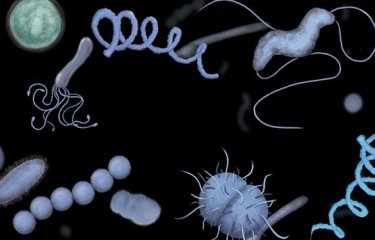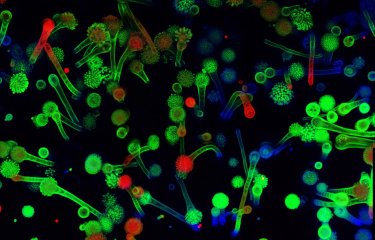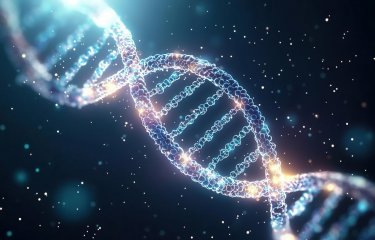Aminoglycosides are antibiotics effective against a wide range of bacteria including Escherichia coli, Pseudomonas aeruginosa and Staphylococcus aureus. Until now though, their mode of entry into bacteria has remained unknown. Scientists at the Institut Pasteur, working with teams from Inserm, the CNRS and Université Paris Cité, have recently demonstrated that aminoglycosides enter bacteria by using sugar transporters. In addition to this discovery, they have also successfully doubled the number of transporters, even in the most resistant Escherichia coli strains, thus improving antibiotics' penetration rate and efficacy. Details of this breakthrough were published in Science Advances on September 5, 2025, with clinical trials anticipated in the near future.
Antibiotics need to get inside pathogenic bacteria in order to be effective. Aminoglycosides, for example, are able to effectively cross the double membrane barrier of Escherichia coli – a gram-negative bacterium that can cause urinary tract infections, sepsis and endocarditis(1) – blocking protein synthesis and causing bacterial death. However, some E. coli strains are resistant to treatment, and were responsible for 829,000 deaths worldwide in 2019(2). "How aminoglycosides enter bacterial cells has been the subject of debate, one hypothesis being that the antibiotics attach themselves to the bacterial cell envelope and cross it passively," explains Zeynep Baharoglu, lead author of the paper and Research Director within the Bacterial Genome Plasticity Unit at the Institut Pasteur. "However, basic research conducted by our team on bacterial stress in response to antibiotics unexpectedly opened up a new avenue."
While studying the behavior of the bacterium Vibrio cholerae, responsible for cholera, the scientists discovered a correlation between the efficacy of aminoglycosides and the presence of sugar transporters – 'gateways' that specifically allow glucose, sucrose, fructose, etc. to enter bacteria and supply them with energy. Following their intuition, the scientists decided to study this mode of transport in detail in Escherichia coli. The results certainly lived up to expectations. "Using fluorescent aminoglycosides in particular, we observed that they were entering E. coli bacteria actively through the gateways used by the various carbohydrates. It is the first time that antibiotics have been shown to use this mode of transport," says Zeynep Baharoglu.
Aware of the plasticity of transporters – whose numbers fluctuate depending on the type of sugar present in the environment – the scientists increased their abundance in the hope of improving bacterial permeability to antibiotics. They tested 200 compounds both on human biological samples contaminated with E. coli and in an animal urinary tract infection model, which led them to identify a particularly effective candidate. "It emerged that by using uridine(3), the total quantity of sugar transporters could be doubled in E. coli bacteria, thus leading to a tenfold increase in their sensitivity to aminoglycosides. It is also very interesting to note that some drug-resistant, and even multidrug-resistant, bacteria regain sensitivity to aminoglycosides when uridine is present," notes Zeynep Baharoglu. Similar effects can also be seen in a number of other bacteria.
This discovery raises high hopes. By administering uridine, it could be possible to reduce antibiotic doses, thus lowering the risk of creating resistance, while also limiting potential side effects. High doses of aminoglycosides can, for instance, be toxic to the inner ear or kidneys. "This is a major discovery that could be a game changer for this antibiotic class, enabling it to be used at lower concentrations or for shorter treatments, extending use of the combination to other diseases such as endocarditis and septic shock," says Zeynep Baharoglu.
A further opportunity lies in "grafting" uridine onto various antibiotics to help them enter bacteria, particularly those that are drug-resistant. "Uridine is actually already used in clinical practice for different indications. Its lack of toxicity in humans has already been demonstrated, which will allow us to save time synthesizing new molecules, conduct clinical trials very quickly, and thus reduce the costs of bringing products to market," comments Didier Mazel, Head of the Bacterial Genome Plasticity Unit at the Institut Pasteur. "This work also highlights the importance of basic research. Without it, this discovery, which could play a key role in future strategies to combat antibiotic resistance—would not have been possible." According to WHO data, antibiotic-resistant bacteria were linked to the deaths of over 6 million people in 2019(4).
(1) A severe infection of the heart's inner lining
(2) www.thelancet.com/journals/lancet/article/PIIS0140-6736(21)02724-0/fulltext
(3) A nucleoside that contains a sugar and is included in the composition of RNA
(4) www.who.int/news-room/fact-sheets/detail/antimicrobial-resistance
Source
Uridine as a potentiator of aminoglycosides through activation of carbohydrate transporters, Science Advances, September 5, 2025
Manon Lang1, 2, 3, Stéphane Renard3, Imane El-Meouche4, Ariane Amoura4, Erick Denamur4, Léo Hardy1, Julia Bos1, Tara Brosschot5, Molly A. Ingersoll5, Eric Bacqué3, Didier Mazel1*, Zeynep Baharoglu1,6*
1 Institut Pasteur, Université Paris Cité, CNRS UMR3525, Unité Plasticité du Génome Bactérien, 75015 Paris, France
2 Sorbonne Université, Collège Doctoral, F-75005 Paris, France
3 Evotec ID (Lyon) SAS, 69000 Lyon, France
4 Université Paris Cité, INSERM UMR 1137 IAME, F-75018 Paris, France
5 Mucosal Inflammation and Immunity Team, Université Paris Cité, CNRS, Inserm, Institut Cochin, and Department of Immunology, Institut Pasteur, Paris France
6 Epitranscriptomic and translational responses to antibacterial stress Team, Expression Génétique Microbienne, CNRS UMR8261, Institut Pasteur, Université Paris Cité, Institut de Biologie Physico-Chimique, Paris, France
*Principaux auteurs





